
Portals to Hell
If you haven’t wondered what Jack Osbourne was up to for the last few years, you probably should have—the son of the “Prince of Darkness” has been investigating the paranormal and is one of the host’s of the Travel Channel show Portals to Hell. It almost feels a bit on the nose.
Along with seasoned paranormal investigator Katrina Weidman, the show takes you to some of the most notoriously haunted locations in the country intending to find out if the activity is caused by a Portal to Hell. While providing a rather interesting basis for a paranormal investigation show, they stick with the traditional ghost-hunting formula that we’ve all become accustomed to—albeit with a bit more technology than we’ve seen until recently.
The Layout
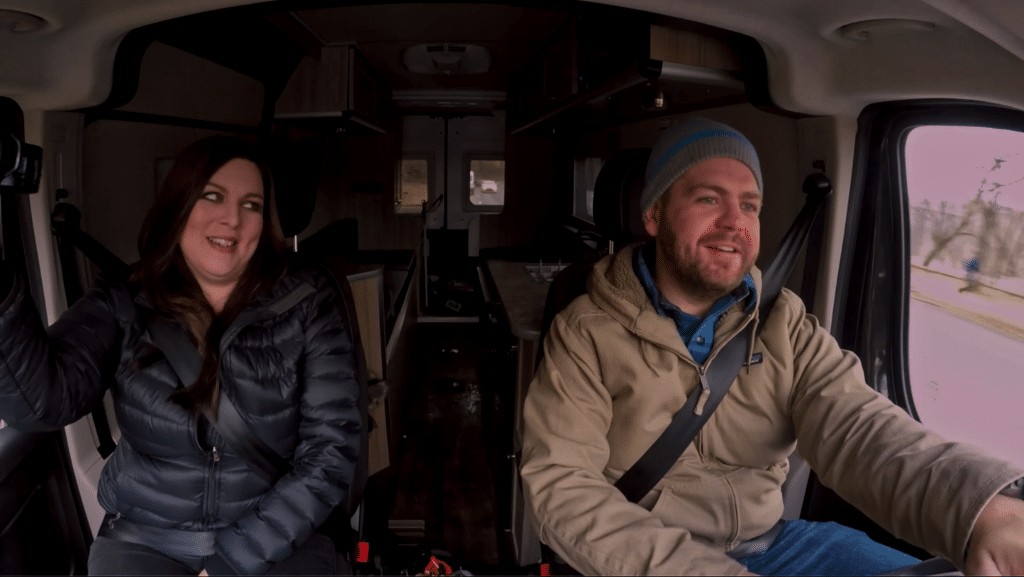
Each episode begins in one of two ways: either Katrina and Jack are driving to the location in their tech van (a sort of modern, nondescript-tool-van version of the Ghost Buster’s Ecto–1) or they’re leaving the airport and being picked up by their conveniently-waiting van. Often—and especially when leaving an airport—the show opens to a selfie-styled narration by Katrina and Jack as they pack up and get ready to head out. During the drive, Katrina and Jack discuss the background, history, and prominent paranormal claims about the location until they arrive.
From here, the show is broken into sections complete with title cards that appear on the screen to let you know where you are in the episode.
The Tour
Once Jack and Katrina arrive at the location, they go on a tour the location with the property owners or staff who relay the paranormal experiences that they, and sometimes guests, have had. At each stop on the tour, the experiences are recounted in detail and the team uses this time as a way to probe for more detail to get a better understanding of what they might expect during their investigation. At the end of the tour, Katrina and Jack take time to review what they’ve learned and begin preparations for the investigation.
The Investigation
As far as investigations go, Portals to Hell is very familiar. They begin by setting up stationary cameras in some of the more active locations. Once their cameras are set up, they confirm everything is working from a central monitoring location—sometimes set up in their van—and begin the nighttime investigation.
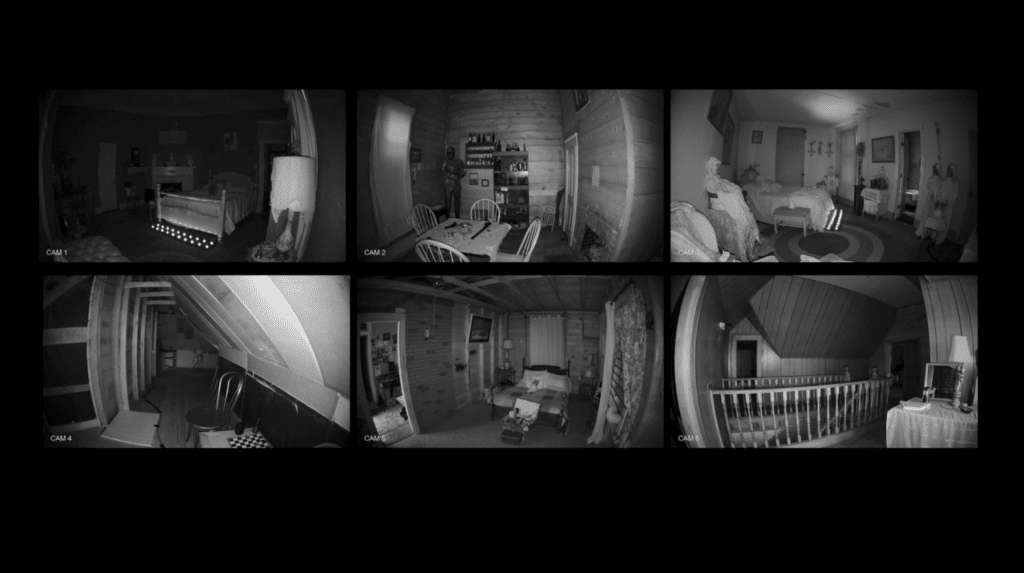
The investigation is fairly standard—taking turns individually investigating “hotspots” and investigating as a team, EVP sessions, talking to a dark room, and quickly turning as they hear a noise behind them asking, “Did you hear that?”.
Like a number of the ghost hunting shows in 2019, the investigations on Portals to Hell are marked by a number of different technological tools they bring with them. From digital audio recorders and EMF meters to laser grids and FLIR cameras, Katrina and Jack aim at collecting evidence that can be analyzed—not unlike a number of other paranormal investigators. These are all “tried and true” methods of documenting and measuring potential paranormal activity. The duo, however, are also upping the ante with devices like Kinect SLS cameras that are based on the Microsoft Kinect Xbox peripheral that maps movement and the GeoPort which, similar to a Spirit Box, provide a method for spirits to communicate through a radio-like device.
The shift to using more technology didn’t start with Portals to Hell, but they seem to be part of a greater trend among ghost hunting shows like Ghost Nation, Ghost Hunters, Ghost Lab, and others.
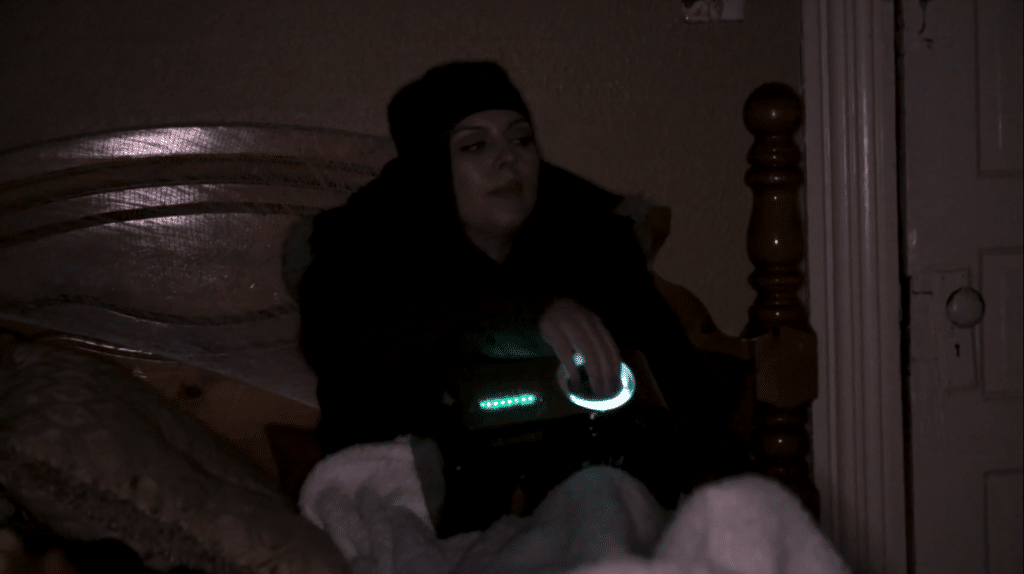
Alongside the amount and variety in technology used in their paranormal investigations, there’s a growth in the amount of interaction and evidence collected. The introduction of the Kinect SLS camera or GeoPort has provided new ways for investigators to locate and communicate with the spirits they’re hunting. The GeoPort, like the Spirit Box, scans radio frequencies but instead of simply broadcasting the scanned frequencies, it takes the audio frequencies and processes them before converting them to audio. Each time the GeoPort is used, it seems to provide some kind of intelligent responses to the Katrina and Jack’s questions. Similarly, the Kinect SLS camera uses an infrared grid and camera to identify motion while the software maps that motion to the shape of the entity—originally people. While it was developed for playing video games by using movement, it’s been converted to a handheld device to be utilized by investigators to locate spirits. Like the GeoPort, it would seem that any time the Kinect SLS camera is used, it manages to locate and capture a spirit’s presence.
The Final Day, or The Debrief
After their investigation is over, Katrina and Jack sit down with the clients or property owners to review their evidence—or lack of evidence. The property owners, like in any other paranormal investigation show, are generally interested in the results. Once they leave the location, the show coverts back to the selfie-style filming for the teams debrief as they drive away, presumably toward the next investigation. During this debrief, while not always the case, Katrina and Jack will discuss whether or not the location is home to a Portal to Hell.
Analysis
One of the more interesting, and realistic aspects of the show is that they full acknowledge and interact with their production crew. It’s not often that a show will acknowledge their production crew during an investigation. Notable examples besides Portals to Hell are from the original run of Ghost Hunters where Grant and Jay would occasionally check with a camera operator or audio tech to see if they caught evidence in real time, Most Haunted where the production crew are the main camera operators throughout the investigation, and Ghost Adventures where they will occasionally bring an additional camera operator to help them in larger investigations. For the most part, though, paranormal investigation shows prefer to give the impression that the investigators are the only ones in the location.
The opening and closing “selfie” footage is also an interesting, novel touch. This makes for a travel-diary feel to the opening, even though it’s intercut with their crew filming them as well, giving the episode opening a bit of a personal or intimate feel. While this style of narrating the show bookend’s each episode nicely, it also helps to give the impression that the viewer is being included.
Another notable aspect of Portals to Hell is the amount of technology they employ in their investigations. When the first season premiered in 2019, the show was over ten years removed from the original Ghost Hunters where the technology was limited to night vision cameras, electrician’s EMF detectors, and digital voice recorders. In the intervening years, ghost hunting technology has changed somewhat dramatically into purpose-built devices that their inventors claim will allow you to speak with the dead and detect their presence.
Throughout the series, they return to devices like the GeoPort and Kinect SLS camera to communicate with spirits and collect evidence. Each device they use is explained and described as a scientific instrument. The problem with these devices is that there is no way to corroborate the evidence collected, nor is there any scientific study that backs up the claims of these devices. On one hand, the use of these devices makes for dramatic and compelling TV but on the other, they could just be providing random information that the software—and the investigators—interpret as ghostly voices or images.
Besides these novel elements and the wide variety of technology employed in their investigations, there are a couple of moments that stand out throughout the series.
Notable Episodes:
Season 1, Episode 2: Twin Cities Opera House
In this episode, Katrina states that when there’s disrespect to Native American culture there is an increase in hauntings and paranormal activity. This is a statement that I have some issue with—and I’ve had issues with similar statements on other shows as well. On the surface, there always seems to be a desecrated burial mound or massacre that investigators jump to as a source of a haunting.
While the idea that traumatic events precipitate paranormal activity is fairly standard within paranormal investigation shows—and paranormal investigation generally—this concept combined with existing portrayals of Native American does nothing but to further exoticize their cultures—which is already an issue in media—as well as portraying them as a singular, monolithic identity. It also doesn’t take into account the culture or beliefs of the tribes they are associating this activity with, rather they are using a generalization based on Western culture and applying it universally.
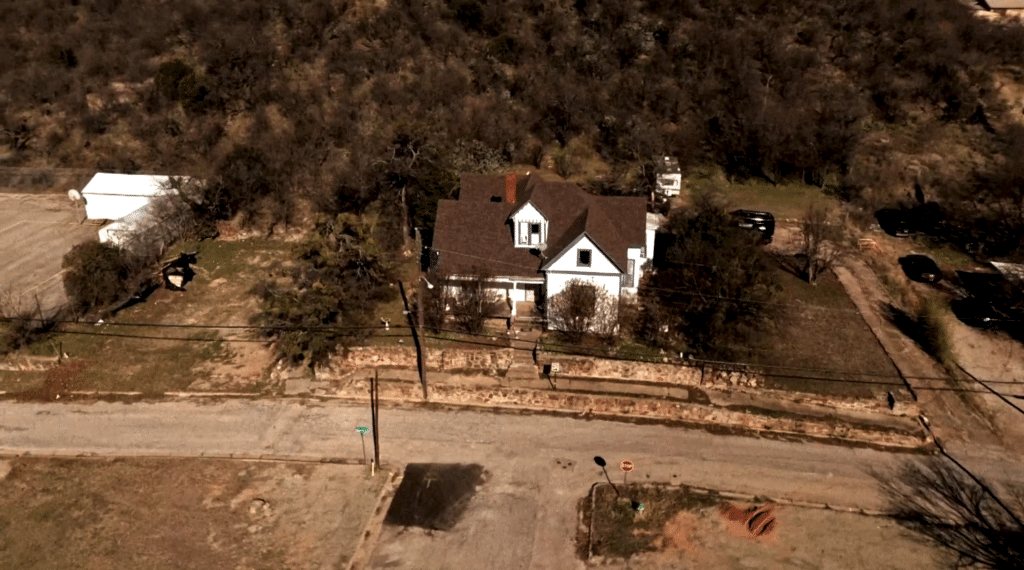
Season 2, Episode 6: Haunted Hill House
Jack and Katrina have some heavy skepticism about the haunting because of the sheer number of fantastic stories they’re being told. Digging deeper into the stories, they’re unable to corroborate a lot of the stories factually, however they’re still overwhelmed by what they’re being told. Part of the problem they’re having is that the stories they’re being told would be difficult to corroborate as they deal with events that would likely not have been recorded.
They’re also told about a demon residing at the location called “Toby”. This is an interesting name as demons are often thought of as being ancient and Toby isn’t a particularly old name as far as I’m aware. It would be interesting to find a medieval text describing a demon called Toby. That being said, demons are often described as liars, so it wouldn’t be out the realm of possibility that a demon takes on the name Toby in modern times.
This episode brings up two important points: the first point is whether or not to take a person’s paranormal experiences at face value. The important thing to think about with this is that a person’s own experiences are true and valid to them because they are the ones who experienced them. Their experience happened regardless of whether the cause was paranormal or explainable. Often, being able to provide a natural explanation for an experience will provide some relief to the client. Other times, though, the client will not accept that explanation and there is really nothing more you can do.
The second point is confirmation bias, or selecting evidence that “proves” the haunting and dismissing anything that doesn’t (or disproves it). Often once a person is convinced of something, if they are performing their own investigation or providing their own evidence it will be proof of their belief. While an absence of evidence does not constitute evidence to the contrary and should not be used to discount an experience, evidence that explains an experience or phenomena scientifically or naturally should at the very least be considered.
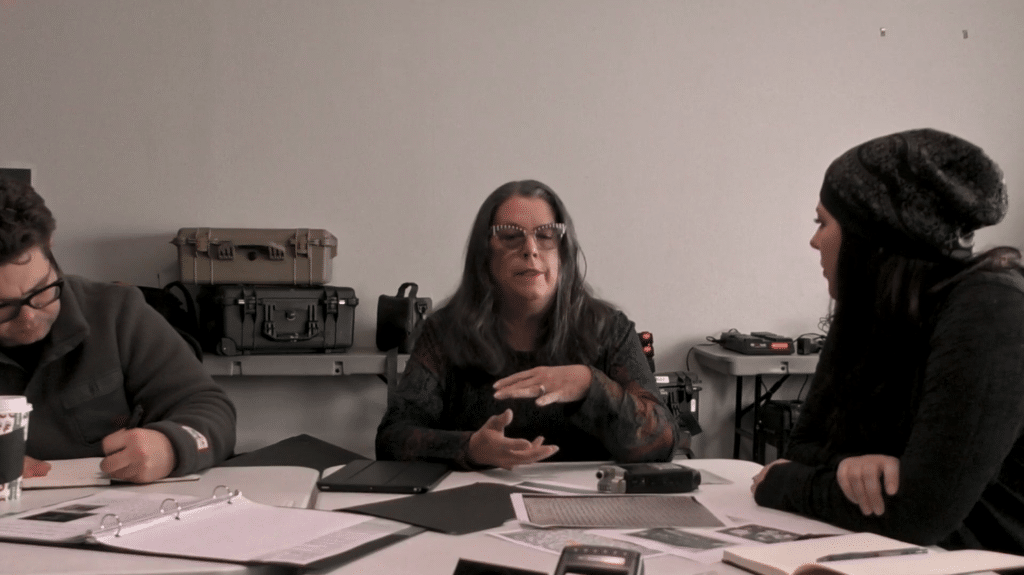
In this instance the investigators do their due diligence and attempt to corroborate the stories they’re presented with as well as analyzing the data they collected. This episode stuck out to me because of this—they seemed to bring a more objective view to the investigation than is present in a lot of other shows, and even other episodes of the Portals to Hell. An important note to this episode is that while they were skeptical of the specific stories they were presented with, they did have personal experiences at the location that were in line with a haunting, these experiences just did not necessarily corroborate the property owners’ own stories.
Wrapping Up
Throughout their investigations, Katrina and Jack seem to be the most concerned with both the collection of paranormal evidence from which they would draw their conclusions. Each episode revolves around not only collecting evidence but understanding how the location’s history helps to interpret that evidence.
There is an issue with tying a locations history to the activity, though. On one hand, using a location’s history can help you narrow down potential spirits to target for communication, making for a more productive investigation (and a more entertaining television show). On the other hand, this provides an easy avenue for confirmation bias—by having people or an event that you are concentrating on, you’re more likely to try to prove or believe that those people are the spirits experienced at the location and that the events are the cause.
This criticism isn’t specific to Portals to Hell. Most, if not all, paranormal investigation and ghost hunting shows are guilty of this. One important caveat, though, comes in the form of Season 2, Episode 6—understanding the history of a location can be a benefit for comparing what the location owners tell you about their experiences and knowledge of the location to what information is available and what can be corroborated.
All in all, Portals to Hell is well crafted, high production value, entertaining paranormal investigation show. The investigators and hosts do a great job of presenting the show while taking their investigations seriously and seeming to genuinely want to understand and collect data about the paranormal.
Portals to Hell airs on the Travel Channel. You can watch Seasons One and Two online at watch.travelchannel.com or the Travel Channel app through your cable or satellite subscription, and with your Discovery+ subscription.